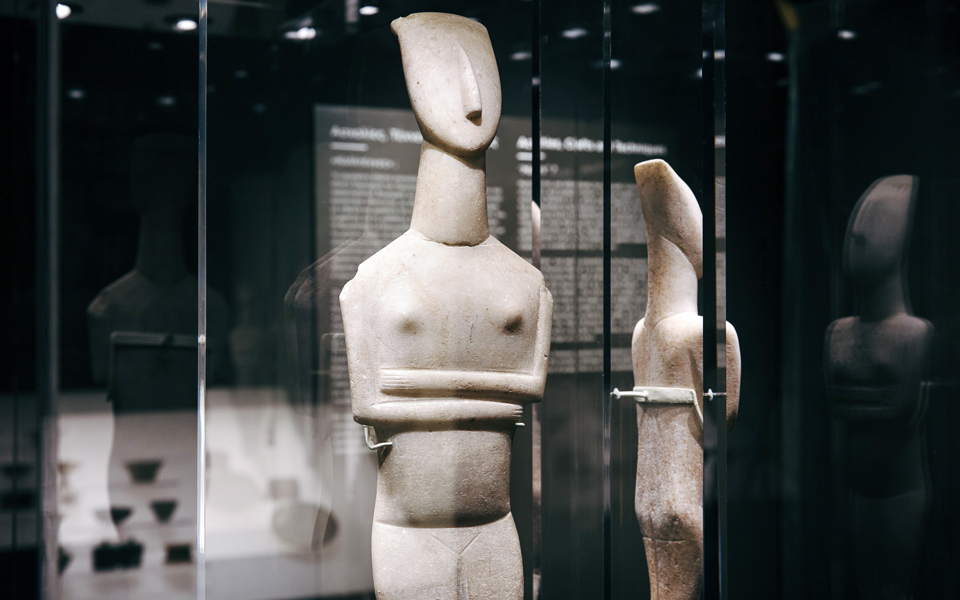In one of the most rugged parts of Syros, on the north side, just across the straits of Tinos – Andros, one finds the fragments of Cycladic settlement at Kastri (2800 – 2300 BC). Only traces of the the floor plans of the tiny houses that housed these courageous and inventive residents of Aegean survive today. In many of these buildings there is a touching detail: the notch on the stone threshold where the door would stand. Walking around here, visitors travel back in time. The view of the sea, the nearby hills and islands on the horizon remains unchanged.
There is no more charming a thought than trying to imagine what daily life was like in the Archipelago for people who knew how to survive, to protect themselves, but also knew how to grow, to believe in higher powers and to travel. Most identify their world with stone idols, ignoring the course of their life.
One of the most anticipated exhibitions of the year, entitled “Cycladic society, 5000 years ago,” which opens in early December at the Museum of Cycladic Art, plans to shed light on this topic. The exhibition is being held to mark 30 years since the museum’s foundation. “This is a significant and symbolic return to the original source,” says Nikos Stambolidis. The director of the Museum of Cycladic Art (MCA).
The exhibition will include over 200 items which have been sourced from the MCA, from the National Archaeological Museum, the Museum of Naxos, Apeiranthos, Syros, Paros and the Museum of Pavlos and Alexandra Kanellopoulos. “Since we are talking about a period in which we have no written sources, the past will be traced through the same objects that have survived until today: utensils, tools, figurines, weapons, etc. They can tell us a lot about their relationship with nature, sun, sea, air and land. One of the primary elements is that the members of the Cycladic societies, as they had visual contact with the other islands, didn’t view the sea as something which separated them but as a corridor. They developed trade, openness and communication, with little arable land” explains Stambolidis.

© Paris Tavitian
Living Stone
Yet another key to understanding more about the lives of the ancient Cyclades was the stone which came alive in their hands and was transformed into whatever they needed. With excellent geographic sense, with wisdom and economy with the resources available to them and with increased curiosity to explore the unknown, the islanders managed to build a life, remnants of which exist until today.
Nikos Stambolidis explains: “Any visitor to the exhibition who has memories or images of how daily life in the Aegean was during the 50s, 60s and 70s, before the advent of mass tourism, will find many similarities with the first islanders. One sees a continuity. This exhibition will show us a lot of data that has been brought to light by research in recent years, as the vision of this culture was frequently drawn upon by artists of the 20th century, such as Picasso and Brancusi, who drew inspiration from the simple lines of the Cycladic figurines.”














